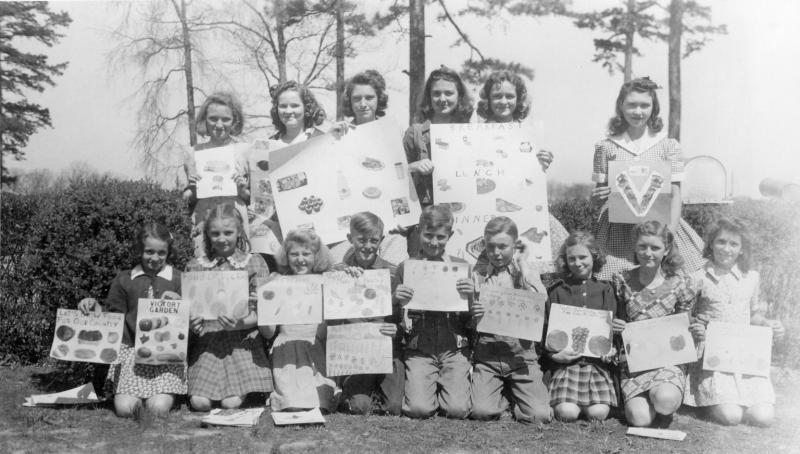During the first few years of the Great Depression, North Carolina Agricultural Extension Service agents focused on emergency relief for adult farmers rather than the 4-H program. By 1933 club enrollment fell to its lowest levels since 1925, and the summer Short Course for that year was canceled.
In the mid-1930s, new 4-H projects were developed, often mirroring statewide Depression relief efforts and national New Deal programs. North Carolina Governor J. C. B. Ehringhaus proposed a statewide focus on woodland conservation in 1933. Three years later, 4-H developed its Wildlife and Conservation project. Also in 1936, the Rural Electrification Program, part of the New Deal, became a component of the extension service, including 4-H. With the increase in programming in the second half of the decade, 4-H rebounded, and by 1939 it had more than 49,000 members.
Home Demonstration clubs quickly subscribed to the North Carolina "Live-at-Home" program. In 1930, North Carolinians imported a large amount of their food and feed. One of every three pounds of beef, two of five pigs, two of three quarts of milk, and one of two chickens and eggs eaten in the state had to be imported. By 1933, the emphasis on growing food at home led to the development of 140,000 relief gardens, 11,500,000 jars of canned food, and 30 curb markets that brought in $300,000 annually.
Home Demonstration agents also recognized the benefits of rural electrification and supported the program. The Office of Relief, headed by a former president of the State Federation of Women's Clubs, sent out "visiting homemakers" who suggested to rural women how best to use the few resources and little money that rural families had. They even helped with house and yard work.
Additionally, Home Demonstration women supported the hot school lunch program. Of the fifty-three counties organized with Home Demonstration in the state, fifty-one arranged to serve hot lunches to rural school children to combat undernourishment caused by the Depression. Often Home Demonstration women donated the food, cooked it, and then served it on a volunteer basis. The New Deal's Work Progress Administration (WPA) built 140 community clubhouses for Home Demonstration clubs in rural areas. The structures were log cabin construction, with stone fireplaces, kitchens, and indoor plumbing if available.
Late during the Great Depression, Home Demonstration oversaw the cotton mattress program, which lasted from 1940 to 1942. As a means for the federal government to dispose of surplus cotton and aid rural low-income families, people applied at Agricultural Adjustment Act (AAA) county offices to make mattresses under the supervision of Home Demonstration agents. For most participants, these were the first mattresses they had owned. Home Demonstration agents used the program to teach women about sewing, bedding, and home furnishings. In two years, 220,000 cotton mattresses and 100,000 cotton comforters were made by rural women.
